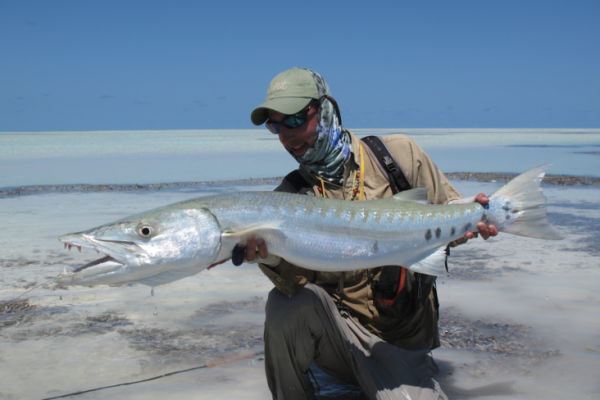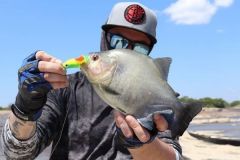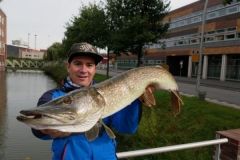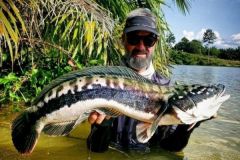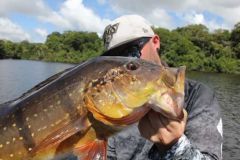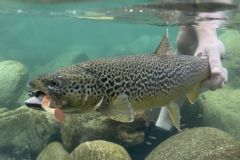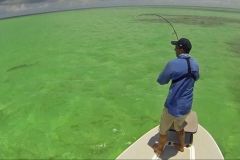You're planning your next trip to exotic seas.
We're going to answer most of the questions you'll have in this phase of preparation and acquisition of equipment for the big departure.
Fishing tackle for exotic fishing
It's important to have several sets of different powers with you to search for the different species present in this type of destination, whether in Guadeloupe, Mexico, Venezuela, Cuba, Florida and throughout the Caribbean, but also in the Indian Ocean (Seychelles, Cook Island, Christmas Island, etc.).
Cannes
It's a good idea to buy sea rods that are :
- For bonefish, power 7 and 8 rods are the most popular. They allow you to cast a good distance while maintaining precision and delicacy.
- For permit and baby tarpon (up to 20 kg), a 9 to 10-power rod is the norm.
- For large predators such as tarpon, jacks, barracuda and sharks (lemon and blacktip in particular), 10 to 12-watt rods are often used.
Reels
It's important to use reels that are the right size for your rod (power 7/8 for a rod size 8, power 9/10 for rods from 9 to 10/11, etc.) with a reliable and progressive drag to combat these powerful marine fish.
Watertight brakes are recommended to limit the impact of salt water, sand and silt. Your reels should also have plenty of backing storage capacity in addition to the line, so you'll have plenty of line to fight off fish that take a lot of line.
Silks
There are warm-water sea silks for almost every species. They all have specific features, which you'll find on the website and on the box, and are designed to fish one or more species. In particular, you need to look at the profile of the line and its length, in order to use what's right for you.
It's not compulsory, but I often advise you to take a spare line with you in case you get cut on coral or have other problems when you get there. In many destinations, you won't be able to buy anything.
Backing
The backing gives you an extra length of line on top of the 30-metre line. Most marine species are very aggressive and will take much more than 30 meters. So you need to add at least 150 metres of backing to your reels, or even more depending on the species you're after, especially if you're wadding from shore.
There are different models of varying strength and thickness. The thinner it is, the more you can put on your reels.
Leads and wires
Each species is fished with different wire resistances.
Fluorocarbon is mainly used to make tips, for its abrasion resistance, superior density in water, invisibility and stiffness.
- For bonefish, we use 10 to 16 or even 20 pound tips.
- For permits from 16 to 25 or even 30 lbs.
- For tarpon, these are specific ready-made leaders with a shock tippet tip that are thick and strong to limit abrasion of the tarpon's teeth. Available in 40, 60, 80 and 100 lb.
- For barracuda, a steel-ended leader is mandatory to avoid being cut by the predator's teeth.
- For trevally, depending on their size, a 30 to 40 lb tip will be used. It all depends on the species and size. The Giant Trevally or GT, and the Ignobilis trevally are the most powerful, and we regularly use up to 80 to 100 pounds.
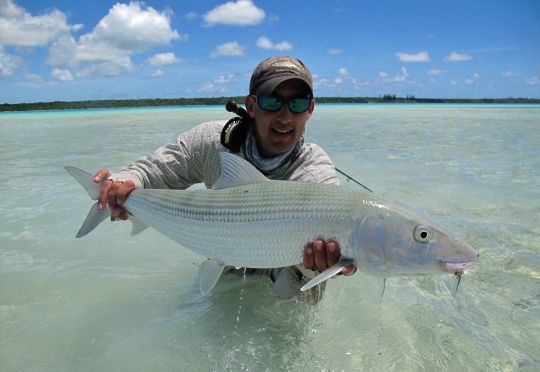
Flies
Once again, for each species there will be a selection of flies to have in your possession to adapt to the conditions, colors of the bottom and its depth. In this video I present several models for each species.
Fly box
Watertight fly boxes are very practical and enable you to keep your flies safe from salt water, which causes the flies to rust. They are more expensive, but, in my opinion, indispensable.
It's a good idea to classify your flies by species. For example, you could have a box for bonefish, a box for permit, and a box for tarpon and jacks.
Quality polarized glasses are essential for exotic fishing, as most of the fishing is done by sight. It's even advisable to carry a second pair with you, so important are they for seeing the fish, in case of loss or breakage.
Different types of glass are available. Copper or amber colors are best suited to flats fishing.
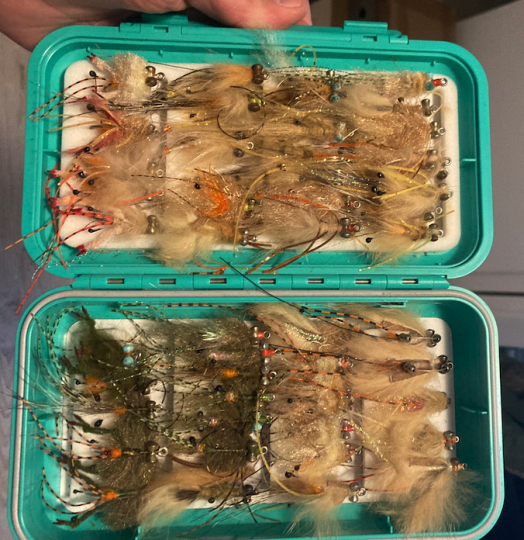
Useful fishing accessories and checklist
A waterproof bag keeps all your gear safe from salt water.
You'll be able to store your fly boxes, spools of line and leaders, wire cutters, gloves, a small rain jacket, as well as everything else you might need for a day's fishing, whether on board or by boat.
Chect pack and bag
A chest pack or small bag allows you to carry your box, a spool of thread, a thread cutter and all the small equipment you need with you at all times.
It's often very practical and means you don't have to carry too much gear, so you can be more mobile and fish in comfort.
Wire cutter
A line cutter is indispensable, as it is not uncommon to change flies regularly while fishing. It can be attached to a retractor or leach for quick access.
A second wire cutter can be taken along and kept in the waterproof bag in case the first is lost.
Camel bag
It's important to drink regularly during long days of fishing in the sun. A water bottle or camel bag is a must to avoid dehydration. In fact, you need to drink often, even when you're not really thirsty.
Chest list
Making a list of the equipment you'll need before you leave ensures that you don't forget anything. Once again, once you're there, it's hard to find what you might be missing.
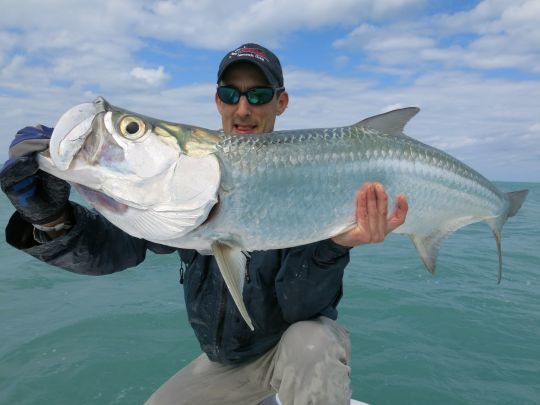
What to wear for a trip in the sun
Cap and hat
A cap or hat will protect you from the sun, which will be omnipresent in exotic waters. This headgear also limits the amount of light reaching the top of the polarized goggles, making it easier to see the fish.
T-shirt and shirt
Shirt or t-shirt, the choice is yours, but you should know that there are specific garments to protect you from the sun while still being comfortable with good freedom of movement. Shirts and T-shirts also block 50% of UV rays, which is no mean feat. Choose neutral or pale colors for camouflage and low visibility.
Pants and shorts
There are special pants and shorts for exotic fishing that are very light and UV-protective.
I personally use shorts and thin black running tights underneath. This makes it easier to split the water when wadding.
Wadding shoe
Wadding shoes are also essential, as there's a lot of walking involved in exotic fishing. The bottom is sometimes hard, as on coral, and otherwise very sandy, and you need to protect yourself from the sand, which can damage your feet.
There are a number of different models, each with its own advantages and disadvantages.
Wadding socks
The socks limit the amount of sand in your shoes and are very comfortable for long hours of walking. Simms wet wadding socks are of the highest quality.
Gloves and fingercot
Gloves provide protection from the sun, which is intense in these destinations.
Some also have built-in fingerstrips that allow the silk to be collected without damaging the fingers.
There are also only finger cots which serve the same purpose and protect the finger that holds the bristle during retrieval, avoiding the creation of painful cracks.
Video explaining exotic fishing equipment
In this video, you'll find all the equipment you can use on an exotic trip, along with some valuable tips that will be useful to both novices and anglers who have already made a trip to a warm sea.
